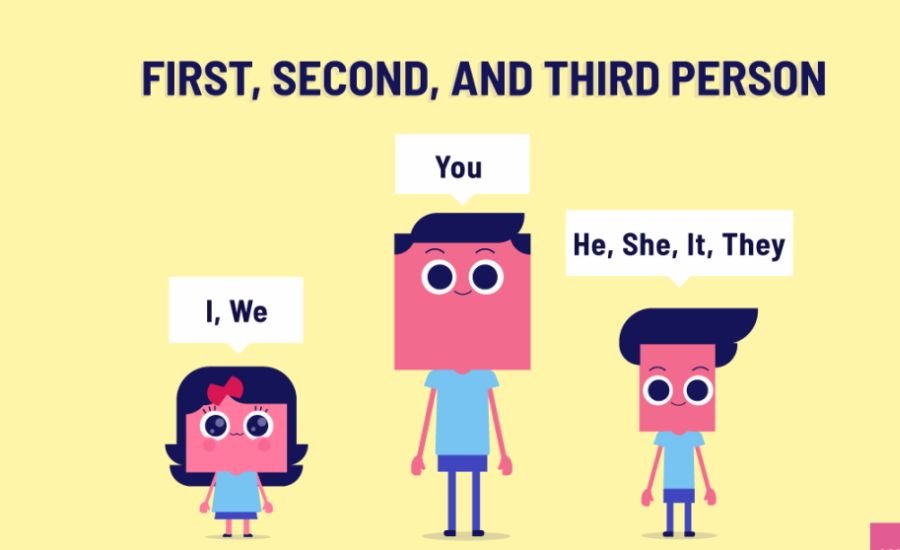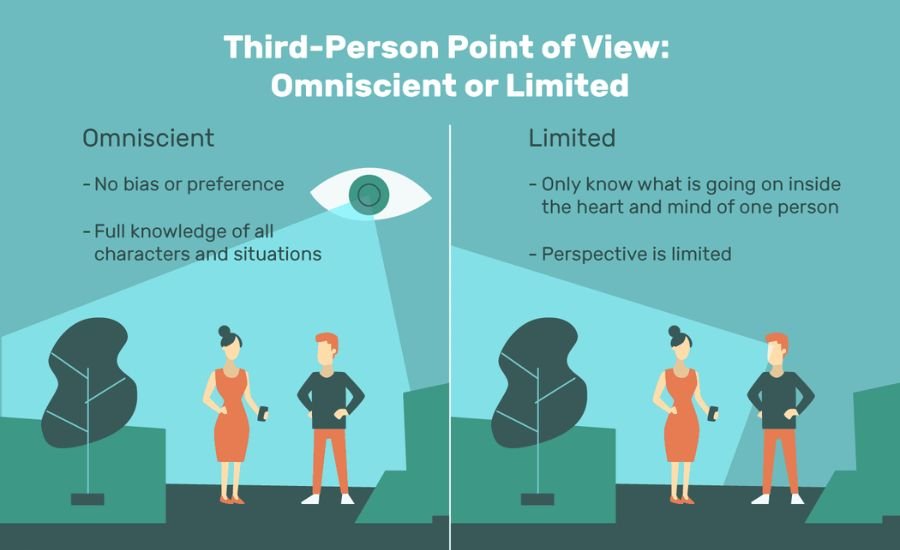When we write or speak, we often use different perspectives to express our thoughts and ideas. These perspectives are categorized as first person, second person, and third person. Understanding these pronouns is essential for both effective communication and proper grammar. In this article, we’ll dive into the details of “what is third person” and explore how it fits into the broader framework of pronouns. By the end, you’ll have a clear understanding of how to use third-person pronouns and the difference between first, second, and third person.
What is Third Person?
When we talk about “what is third person,” we’re referring to one of the three main perspectives used in English grammar. Third person is used when the speaker is talking about someone or something else, not themselves (first person) or the person they are directly addressing (second person). This perspective allows us to discuss other people, objects, or ideas.
Third-person pronouns include words like “he,” “she,” “it,” and “they.” These pronouns are used to refer to subjects outside of the conversation, making them essential for telling stories, providing descriptions, or explaining things about others.
Examples of third-person pronouns:
- He (for a male subject)
- She (for a female subject)
- It (for animals, objects, or concepts)
- They (for plural subjects)
For example:
- He is going to the store.
- She loves reading books.
- It is a beautiful day outside.
- They are playing football.
First, Second, and Third Person Pronouns – A Breakdown

Now, let’s break down the differences between the three perspectives: first person, second person, and third person.
First Person:
The first person refers to the speaker or writer. It is used when the speaker is talking about themselves or a group they are part of.
- Singular: I
- Plural: We
Example:
- I am learning English.
- We are going on a trip.
Second Person:
The second person refers to the person or people being addressed. In English, the second-person pronoun is always “you,” whether you’re speaking to one person or a group of people.
- Singular/Plural: You
Example:
- You are doing great!
- You all should attend the meeting.
Third Person:
As we discussed earlier, the third person is used when referring to other people, things, or concepts. It is not about the speaker (first person) or the listener (second person).
- Singular: He, She, It
- Plural: They
Example:
- He works at a bank.
- She loves to sing.
- It is raining today.
- They enjoy playing sports.
How to Use Third-Person Pronouns Correctly in Sentences
Understanding how to use third-person pronouns correctly in sentences is key to mastering grammar. The main thing to remember is that third-person pronouns change based on the number (singular or plural) and the gender of the subject (he, she, it, they).
Third Person Singular:
For singular subjects, you will use “he,” “she,” or “it” depending on the gender and context.
- He: Used for males.
- Example: He is my best friend.
- She: Used for females.
- Example: She loves art.
- It: Used for animals, things, or abstract concepts.
- Example: It is a beautiful painting.
Third Person Plural:
When you are referring to more than one person or thing, you use “they.” “They” is used for both people and objects.
- They: Used for plural subjects (both people and things).
- Example: They went to the park.
- Example: They are studying for exams.
Examples of Third-Person Pronouns in Action
Let’s look at a few examples to understand how third-person pronouns are used in sentences. These examples will help clarify how to properly incorporate them into your writing and speaking.
- He plays the guitar every day.
- She is planning her wedding next year.
- It was a wonderful experience to travel abroad.
- They love hiking in the mountains.
- He doesn’t like spicy food.
- They are going to visit their grandparents this weekend.
As you can see, third-person pronouns are versatile, allowing us to talk about a wide range of subjects while keeping the sentence structure clear and concise.
May Also You Like: What-do-moths-eat
The Importance of Using Third Person in Writing and Speaking
The ability to use third-person pronouns correctly is crucial for effective communication, especially in writing. It allows you to:
- Maintain Objectivity: In academic and formal writing, the third person helps you maintain an objective tone. It keeps the focus on the subject matter rather than on the writer or the reader.
- Tell Stories: In storytelling, third-person pronouns let the writer describe actions, thoughts, and feelings of multiple characters without making the narrator a part of the story.
- Clarify Information: Using third person allows you to describe people, things, and events without confusion, helping the listener or reader easily follow along.
Common Mistakes to Avoid When Using Third-Person Pronouns
When using third-person pronouns, there are a few common mistakes to avoid:
- Confusing “He” and “She” with Gender-Neutral Terms: Sometimes, people mistakenly use “he” or “she” for things that don’t have a clear gender. In such cases, it’s better to use “it” for objects or animals when the gender is unknown.
- Incorrect Verb Conjugation: When using third-person singular pronouns like “he,” “she,” or “it,” remember to conjugate the verb correctly. For example, “He likes” (not “He like”).
- Using “They” for Singular Subjects: While “they” is used for plural subjects, it can also be used for singular subjects as a gender-neutral pronoun. For example, “They are a great teacher” can refer to a singular person whose gender is unknown or unspecified.
Conclusion
In conclusion, understanding what is third person is essential for both clear communication and proper grammar. Third-person pronouns, including “he,” “she,” “it,” and “they,” allow us to discuss other people, objects, and concepts without referring to ourselves or directly addressing the listener. Whether you are writing stories, essays, or having conversations, mastering third-person pronouns will improve your language skills and help you express your ideas more effectively.
By keeping in mind the correct usage of these pronouns and avoiding common mistakes, you can confidently use third person in your everyday communication
Frequently Asked Questions (FAQ)
Q1: What is third person in grammar?
A: Third person in grammar refers to pronouns used to talk about other people, things, or concepts. Common third-person pronouns include “he,” “she,” “it,” and “they.”
Q2: Can “they” be used for a singular subject?
A: Yes, “they” can be used as a singular, gender-neutral pronoun to refer to a person whose gender is unknown or to avoid specifying gender.
Q3: How do third-person pronouns affect verb conjugation?
A: In the present simple tense, third-person singular pronouns (he, she, it) require the verb to be conjugated with an “-s” at the end (e.g., “She likes” instead of “She like”).
Stay informed with the latest news and updates on viralzee.com


